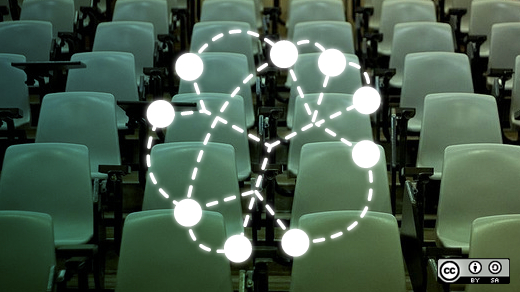For a recap on this year in open education, it's impossible to ignore the role of gaming, including massively multiplayer open online role-playing games (MMORGs or MMOs). MMOs have created quite a stir in education and are being recognized for their potential for better learning. MMOs differ from single-user games and are a far cry from much earlier video games. First, they are played via the Internet. Second, they enable very large numbers of players to interact with one another in a virtual world. And third, the games continue regardless of whether someone is playing or not.
Millions worldwide play the popular, commercial, open world game, Minecraft. Players build constructions out of textured cubes in a 3D, procedurally generated world. Minecraft is being used in many schools today and for various subjects, particularly the humanities. But cost and a lack of training have been barriers for schools looking to use a proprietary game like Minecraft in the classroom. Open games, or games offered freely by non-profit organizations, by contrast, do not often have these same barriers. Moreover, the communities involved with these open games is a golden educational opportunity for teachers to use with their students as a lesson in participation and sharing. SourceForge is a resource for numerous open source MMO games to download for free.
In August this year, MIT released Radix Endeavor in beta as an open MMO for middle and high school students to learn math and science. Entrance into the educational open MMO market by MIT is noteworthy. It shows that MIT is serious about improving math and science education for middle and high school students and also developing innovative tools like MMOs to do so. Using such games like Radix Endeavor with middle and high school students helps break the traditional mold in learning and instruction. It helps to engage students with math and science in a way that is impossible with a printed textbook. I believe that it helps make math and science more meaningful and relevant for visual learners.
Gaming and MMOs are being viewed as a way to enhance the curriculum and bolster a child's education. They're viewed as a way for students to create, share, discover, explore, problem solve, and use critical thinking skills. MMOs, educational games, gaming platforms, and student-designed games are being used in classrooms. EdWeb.net has a database of educational games, many of which are free and/or open source. Fedora, too, keeps a list of free and open source games available for Linux.
The potential of Game-Based Learning (GBL) is still perhaps underestimated. Sheila Webber at University of Sheffield and others have been saying that digital gaming will change education and that virtual worlds will be another way we process information in our daily lives. Games can play a role in all levels of education and with training systems. It can bridge the gap from explicit instruction and a highly structured means of delivering educational content to implicit instruction and unstructured presentation of material. After all, those interested in aviation and flight training may download FlightGear, a free open source flight simulation software project born out of dissatisfaction with commercial flight simulators, and start practicing how to fly.
Many industries (from automobile to weather forecasting) use simulation for training; classrooms are beginning to reflect this training and this type of learning. Open Labryinth, for instance, is being used by a number of medical schools and institutions for training; it gives students a hands-on, practical, virtual environment to use. Likewise, Molecular Workbench enables students to explore hundreds of simulations for physics, chemistry, biology, biotechnology, and nanotechnology. Physlet Builder even allows students to create a physics simulation without writing code. Other examples of open simulations for education include OpenSCAM (a 3-axis simulator), Siafu (an open source context simulator), SmartSim (an open source digital logic circuit design simulator), Jasmin (an open source robot simulator) and many others.
There are many examples of schools using simulations in classrooms today. What's interesting is that this type of simulation or gaming is increasingly being studied and developed for elementary school use. The University of Colorado at Boulder has some math and science simulations for elementary schools, for instance.
From a national survey of pre-K-12 teachers, PBS found teachers are embracing digital resources, but what's significant is that this study was conducted before an influx of tablets and computers entered classrooms in the fall. Follow any teacher technology forums and you'll notice the posts on gaming have exploded since then. Also notice that today close to 97% of teens play digital video games and that educators are scrambling to shift into a digital age with young children who have no concept of a pre-Google, pre-YouTube, pre-Internet world. Under these parameters, Game-Based Learning will only continue to grow in 2014.







4 Comments